Bodrum Castle – The Crusader’s Last Stand
In the last post on this Adventures Abroad tour of western Turkey we arrived at Bodrum, aka the ancient city of Halicarnassus. Our guide Yasemin had given us the day off to relax in this seaside resort and Alison and I used it to visit the remnants of the Mausoleum of Halicarnassus, one of the Seven Wonders of the Ancient World. We also had an opportunity to stroll along the promenade from where we had this great view of Bodrum Castle which is where we are headed now along with the rest of the AA crew. Please join us in touring the last place the Crusaders held in modern day Turkey.
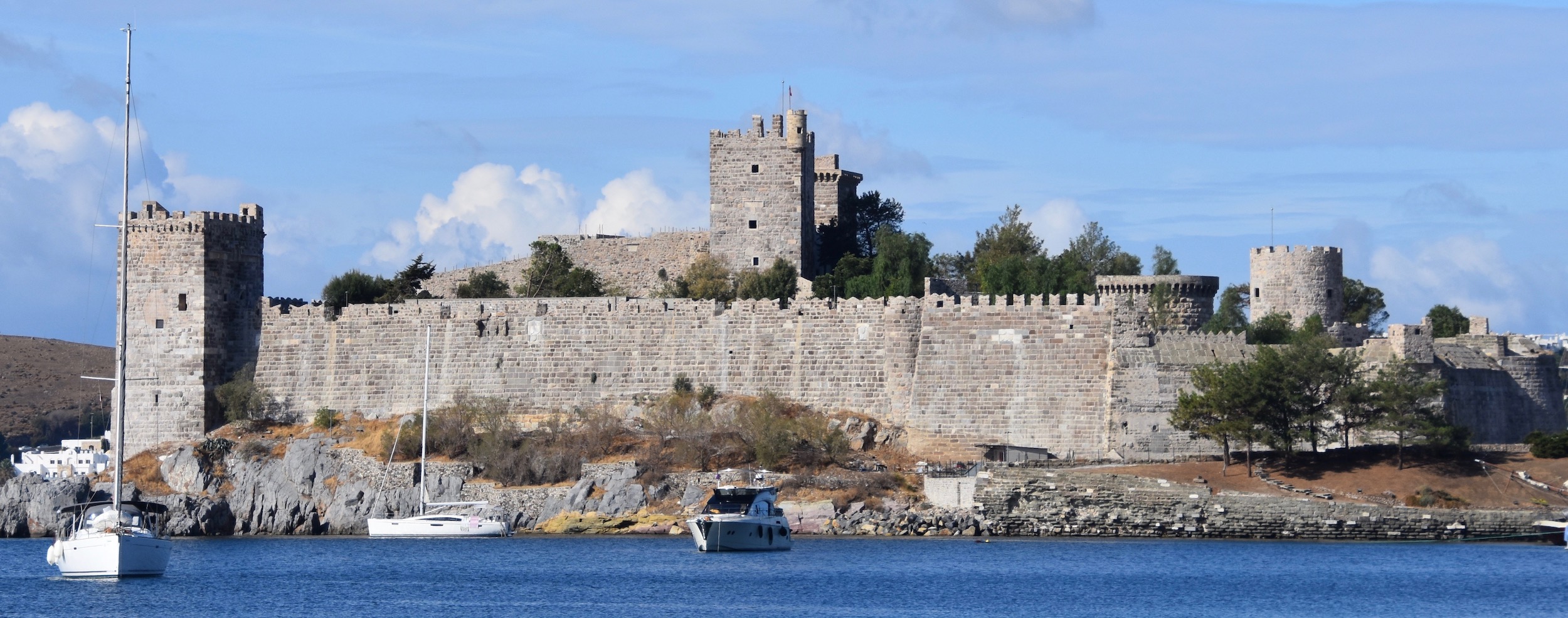
History of Bodrum Castle
Prior to coming to Turkey, Alison and I spent a week on the island of Malta on an AA tour led by our friend Victor Romagnoli, one of the best guides working anywhere today. If you ever get a chance to go on a tour led by Victor, grab it. While on a tour of the harbour of Valleta we learned a lot about the Knights of St. John, also known as the Hospitallers who had been given the island of Malta by Holy Roman Emperor Charles V. They needed a new headquarters after being expelled from Rhodes in 1522 by Suleiman the Magnificent. Prior to their expulsion the order had been active in the Holy Land and Asia Minor since just after the First Crusade ended in 1099. However you might ask, didn’t the last crusade end in 1291 with the fall of Acre? So what were crusaders still doing hanging around this part of the world a couple of hundred years later? Well they weren’t crusading anymore, but essentially acting as defenders of the Christian interests that were increasingly besieged by various Muslim groups including the Egyptians, Ottomans and even Tamerlane. To the Christians they were protectors, to the Muslims nothing but infidel pirates.
During the course of this back and forth the Knights decided they needed a fortress on the mainland and chose the peninsula that now is almost completely occupied by Bodrum Castle. This is an aerial view that gives a good idea of why this is such a strategic spot upon which to build a fortification.
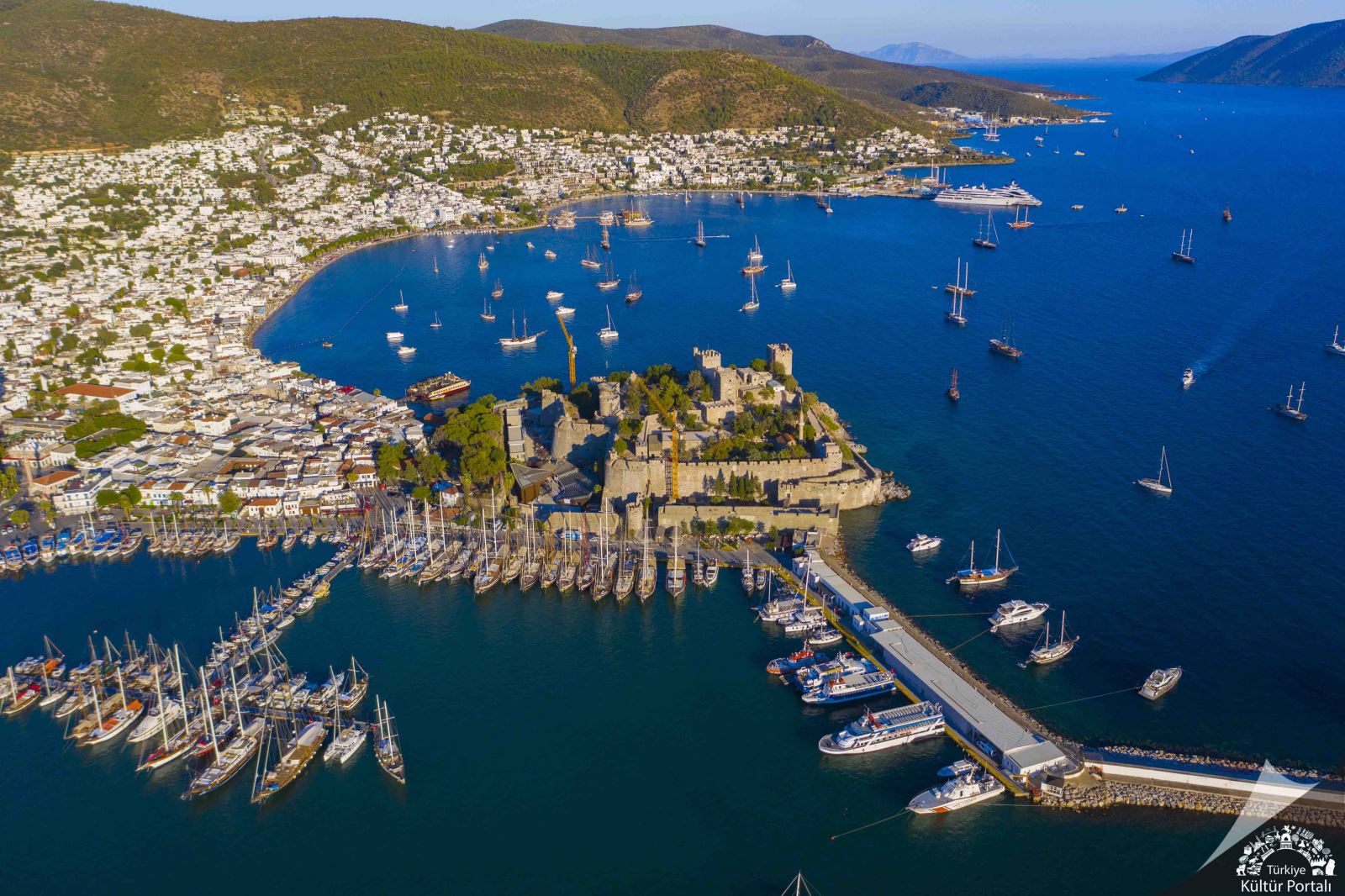
Signs of habitation on what was once an island date back to Doric times 1100 BCE. Some believe it was also the site of the palace of Mausolus which has never been located. The Knights arrived here in 1402 and used materials scavenged from the Mausoleum to build what is officially the Castle of St. Peter. To the everlasting detriment of mankind, most of the magnificent statues that had adorned the Mausoleum were broken up and used to make lime, only a few were spared including the ones of Mausolus and Artemesia which are now in the British Museum. The Knights are comprised of distinct national chapters called langues and each of them contributed to the building of a tower that would constitute their headquarters within Bodrum Castle. Thus we have an English, French, German, Spanish and Italian tower to explore during our visit. The Spanish langue also built a chapel as part of their contribution.
Despite surviving several sieges by Ottoman forces in 1453 and 1480, the Knights were forced to hand it over as part of the terms of the surrender of their principal headquarters on Rhodes in 1522. This then was the final end of the Crusaders and not the surrender of Acre in 1291.
The Ottomans don’t seem to have paid much attention to preserving Bodrum Castle and it largely languished for hundreds of years, being used at various times as a prison and a military base. It even came under fire from a French war ship in WWI. In 1962 the Turkish government realized what an historical gem it had in Bodrum Castle and decided to make it into a museum. In 1964, after significant restoration, the Bodrum Museum of Underwater Archaeology opened to display artifacts from some of the oldest shipwrecks ever found. So a visit to Bodrum Castle has two distinct elements, the castle and grounds and the museum. Although they are intrinsically linked with various displays in each of the towers, I will divide the rest of this post into two sections. First we’ll see the castle proper and then we’ll tour the museum.
Bodrum Castle
This is the entrance to Bodrum Castle through which tourists now begin their exploration of this unique place.
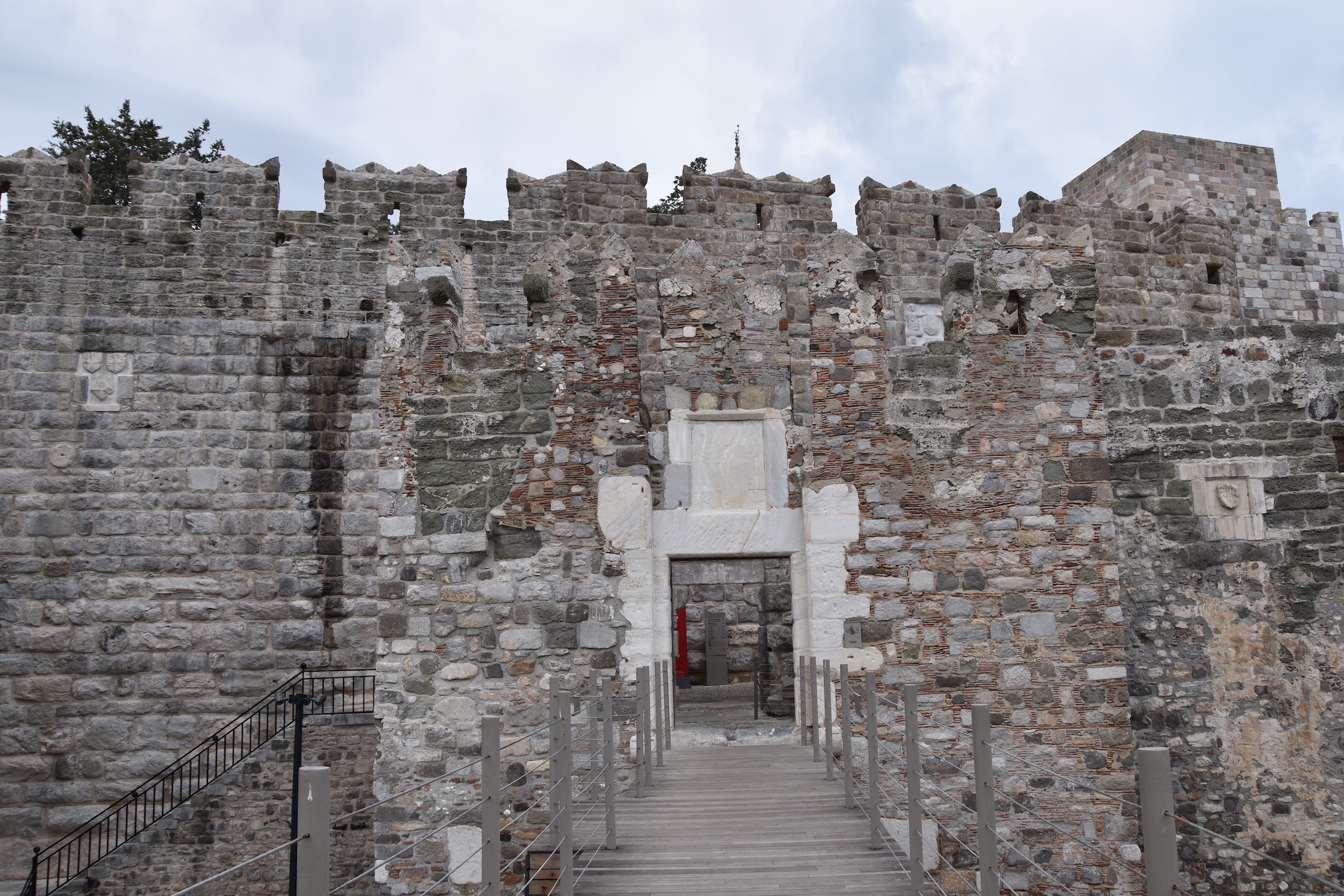
This is the coat-of-arms over the entrances to Bodrum Castle and it makes it very plain that this is a Christian edifice. Coats-of-arms were a big deal in the Age of Chivalry and still are for jerks like Donald Trump who plasters his ersatz one over everything he owns. This one actually belongs to Heinrich Schlegelholt, the chief architect of the castle.
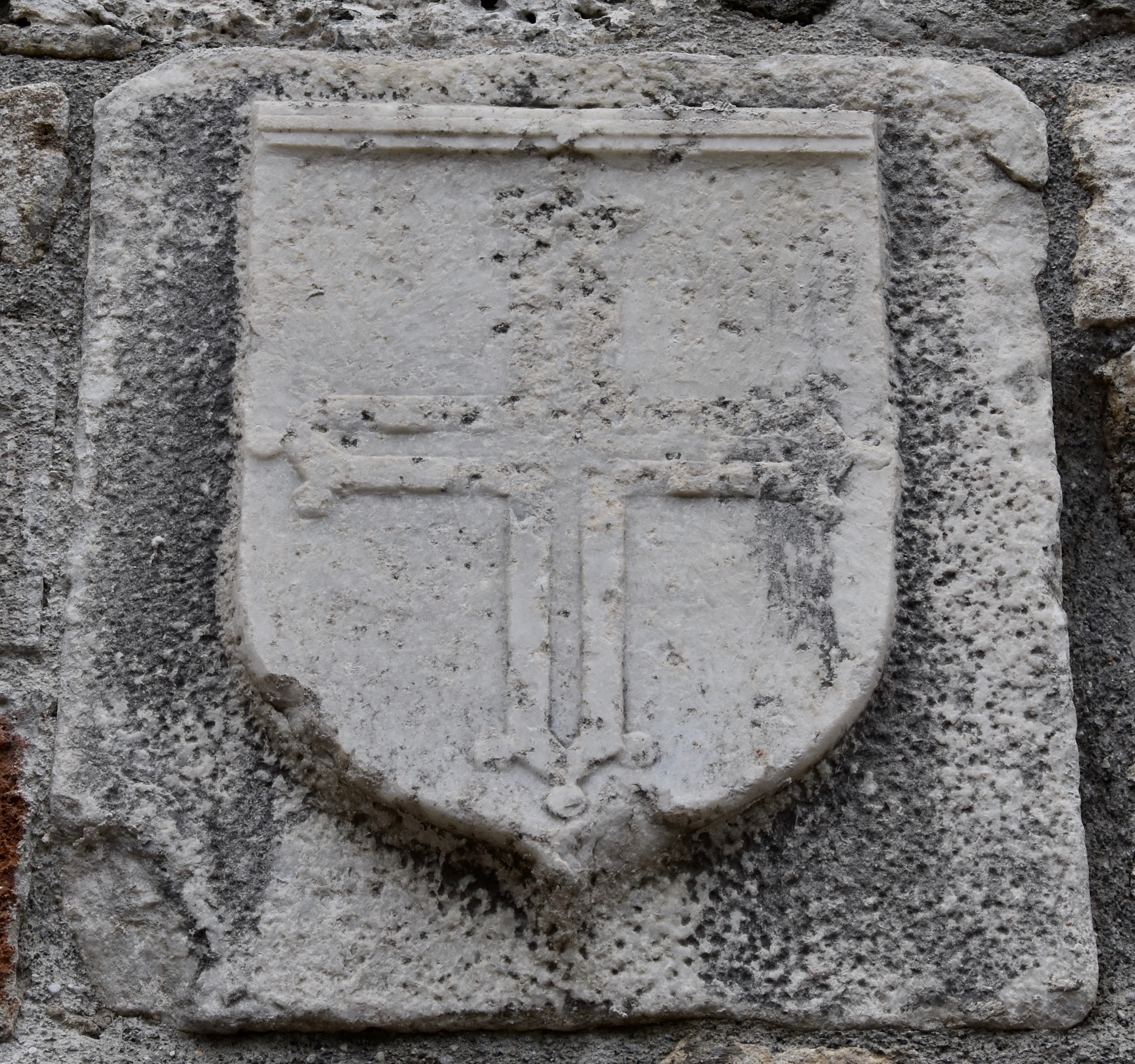
This is the coat-of-arms of the Grand Master of the Knights of St. John. An expert in symbolism like the fictional Robert Langdon in the Da Vinci Code could read these as plainly as you are reading this sentence. You could spend an entire visit to the castle just sussing out the dozens of coats-of-arms that are found throughout Bodrum Castle.
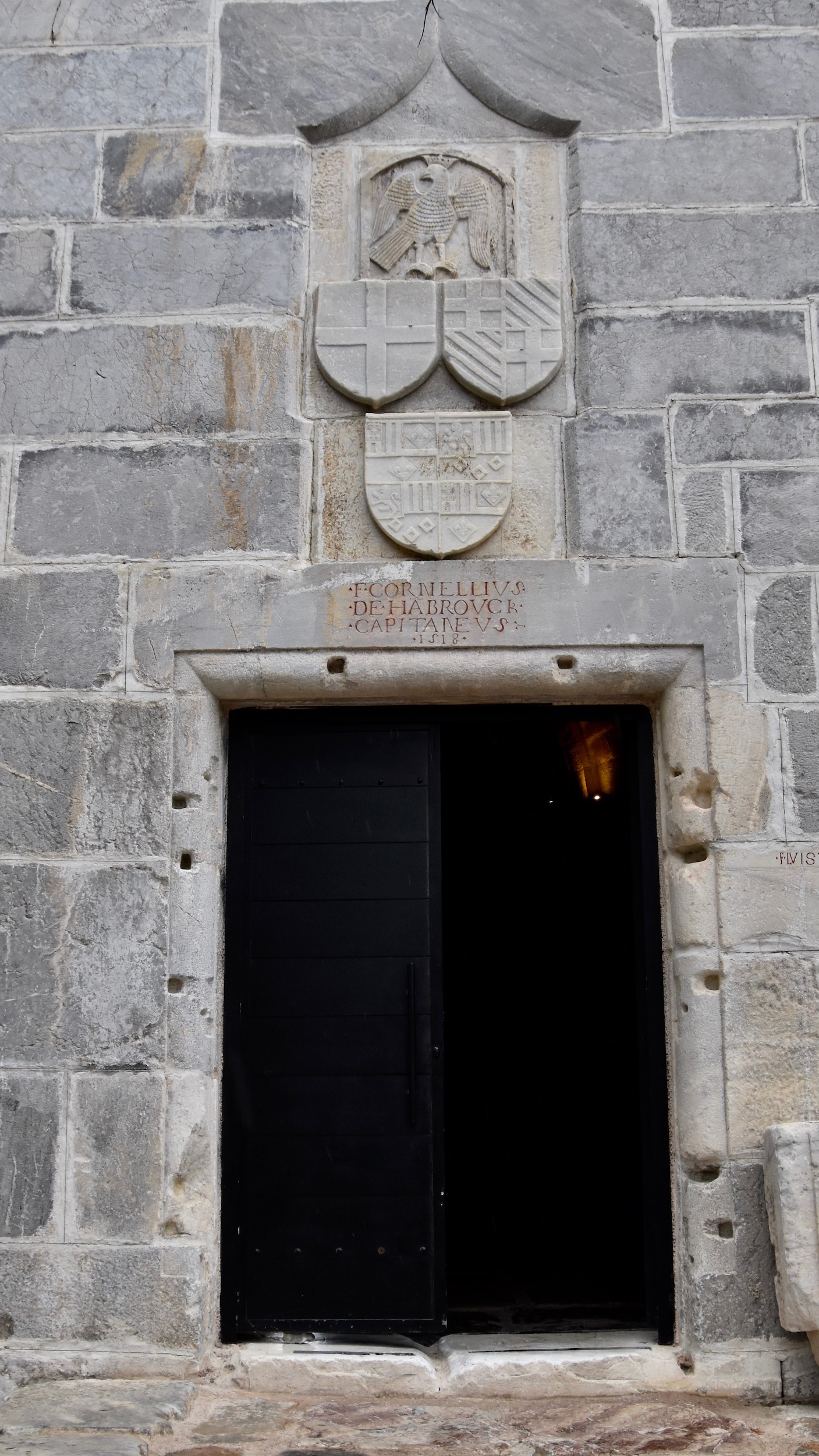
This one I was able to figure out and is attached to the Italian Tower.
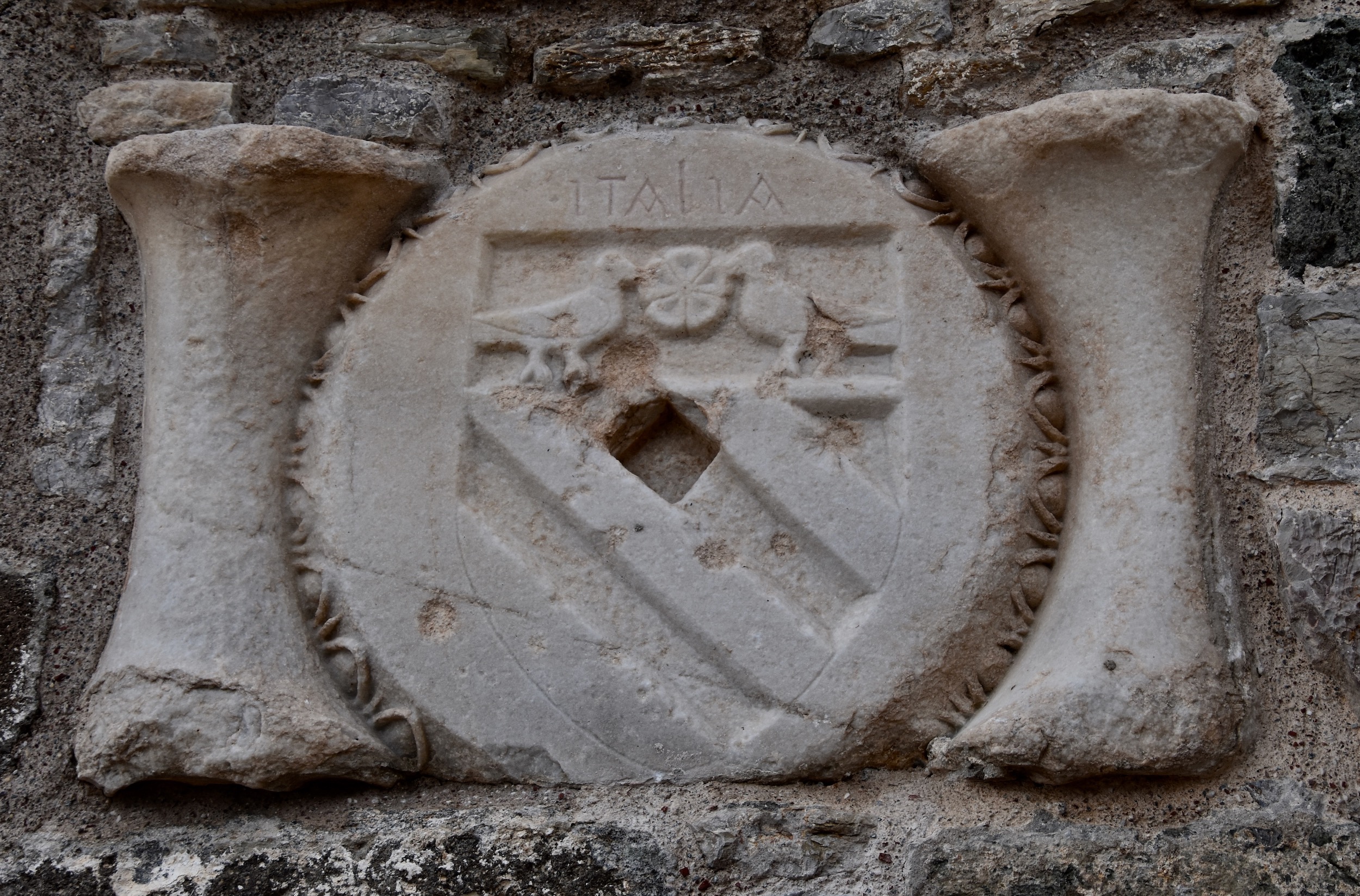
This is the Italian Tower. Note that each building within Bodrum Castle has an explanatory sign in Turkish and English telling the visitor who built it and when.
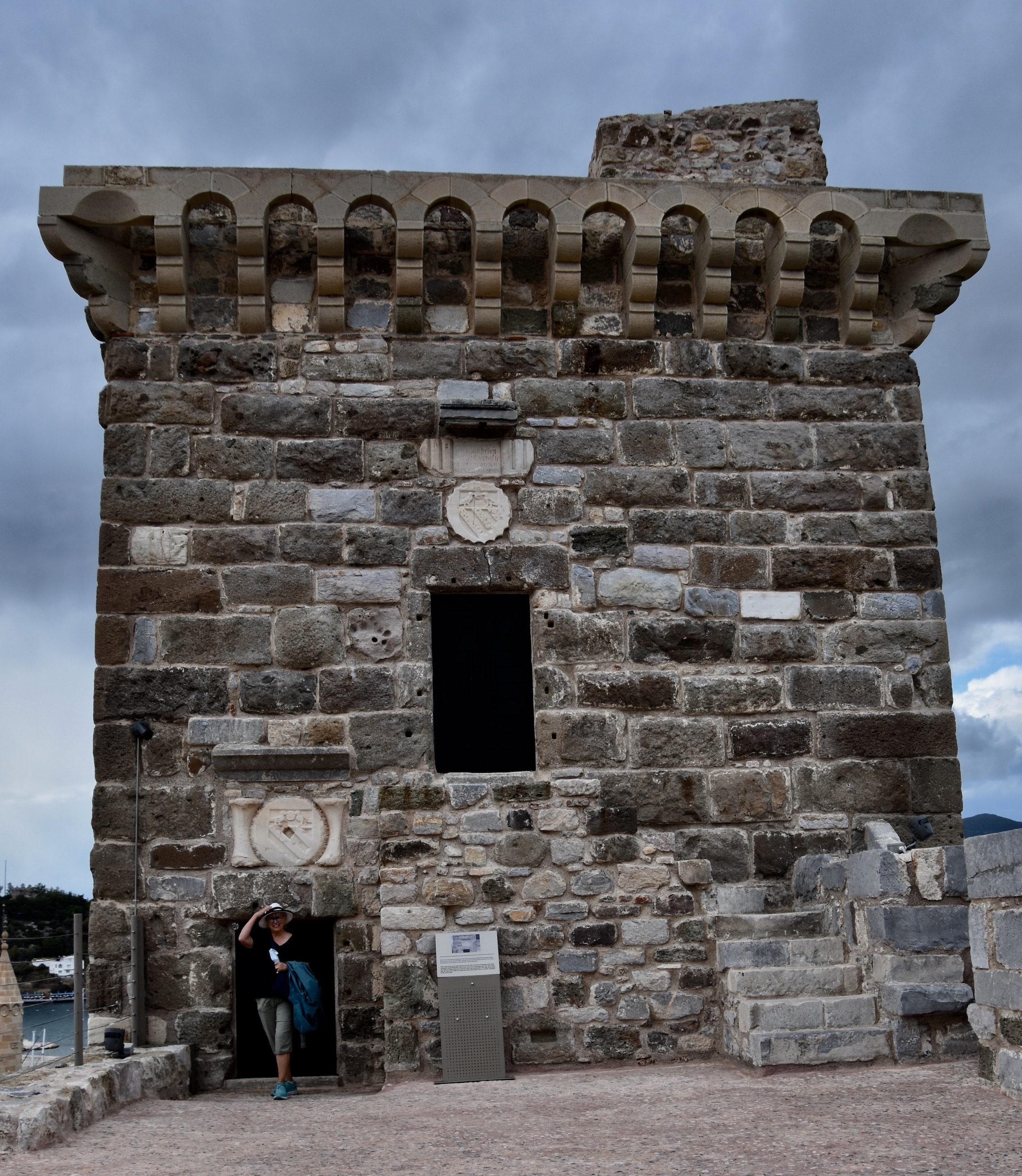
The interior of Bodrum Castle has a surprising amount of open space and greenery. This display of anchors covers a period of thousands of years from the earliest anchors which were just rocks with holes for ropes to the cast iron version with flukes which is what most of us think an anchor should look like.
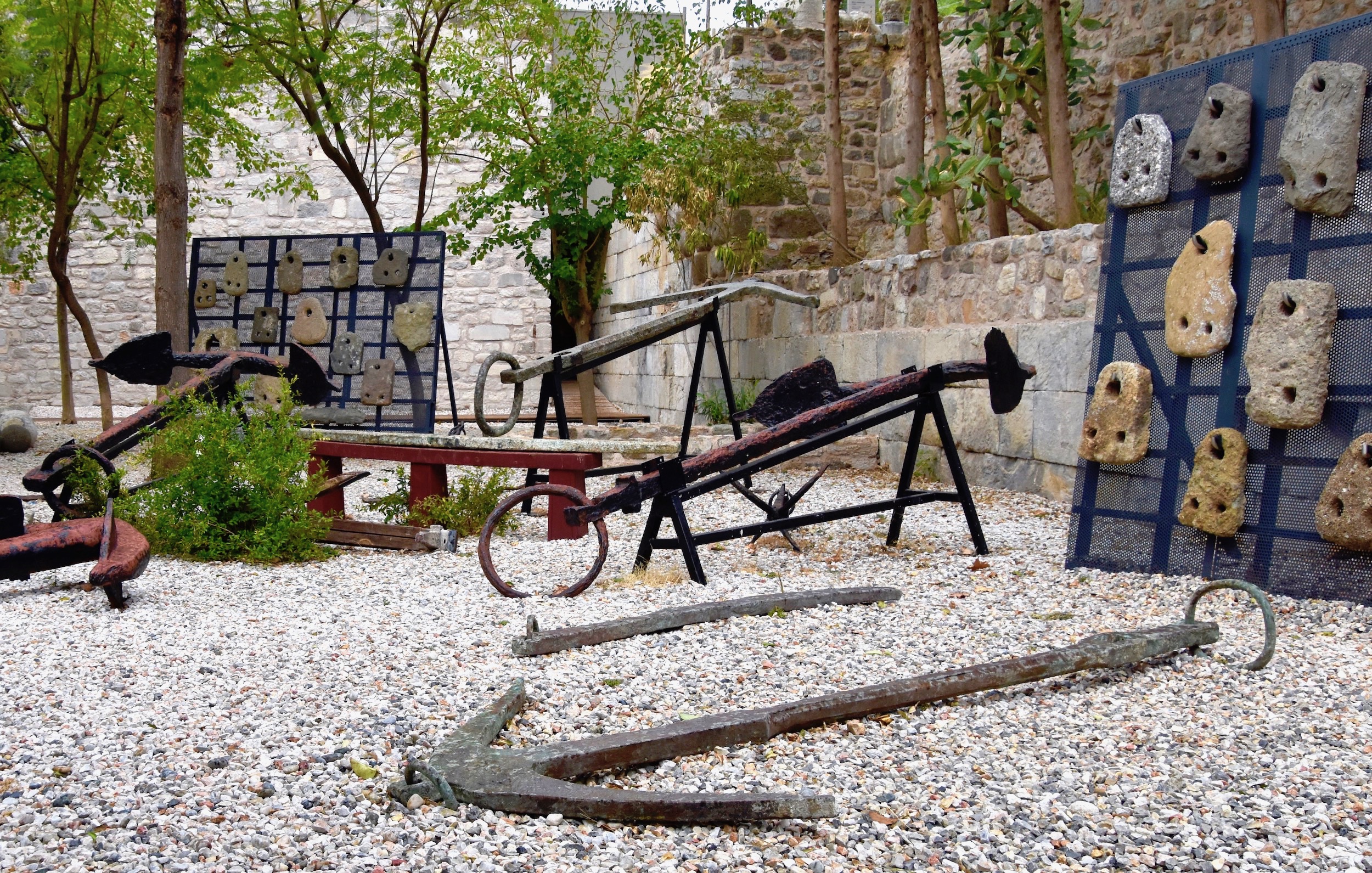
This is the entrance to the Knight’s Chapel which like Hagia Sofia has been converted into a mosque for absolutely no good reason.
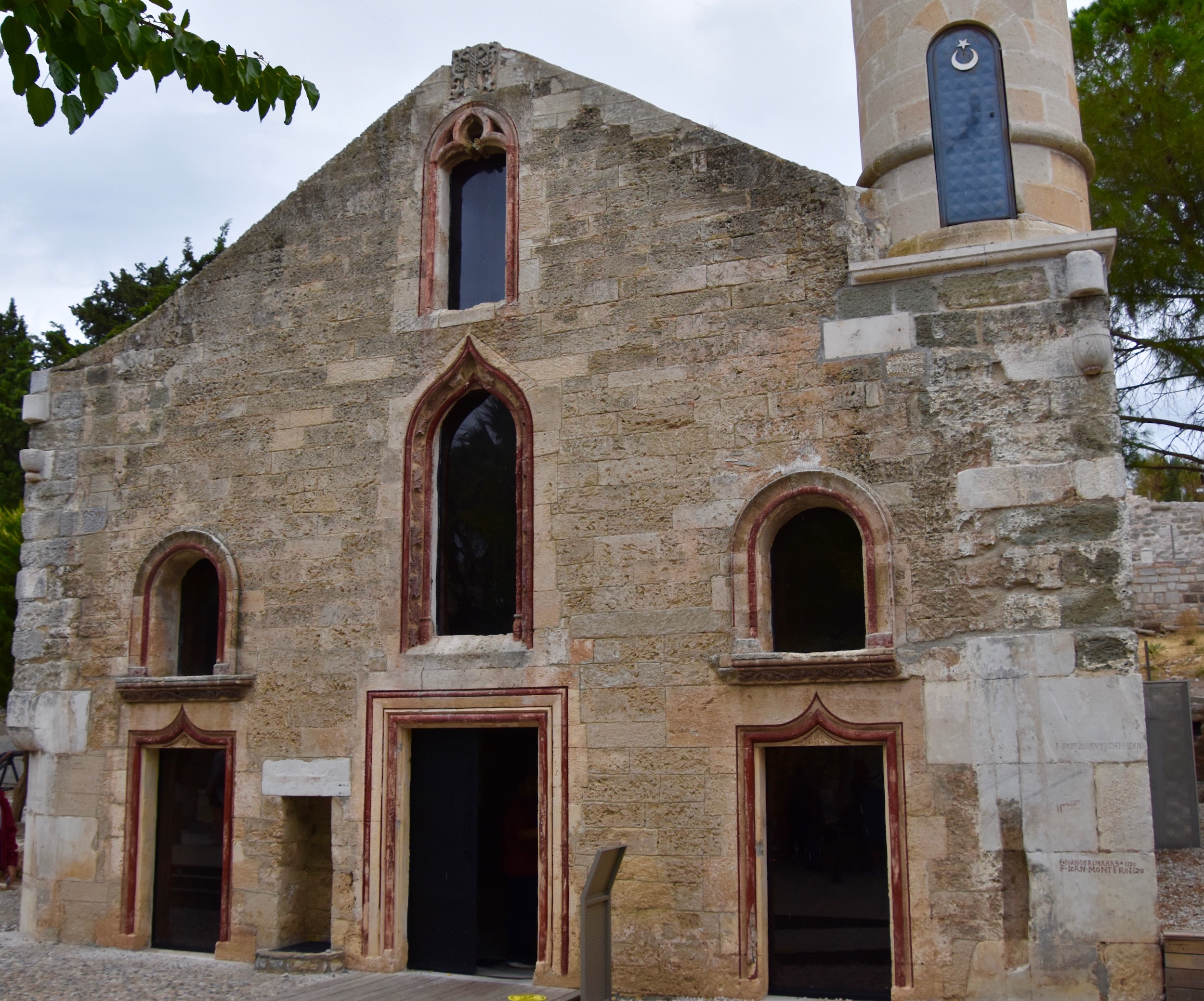
Perhaps the most interesting part of visiting the castle proper is the view of Bodrum from the ramparts. You can see that it’s not that big and the view has not been ruined by multiple condos such as we saw at Kusadasi.
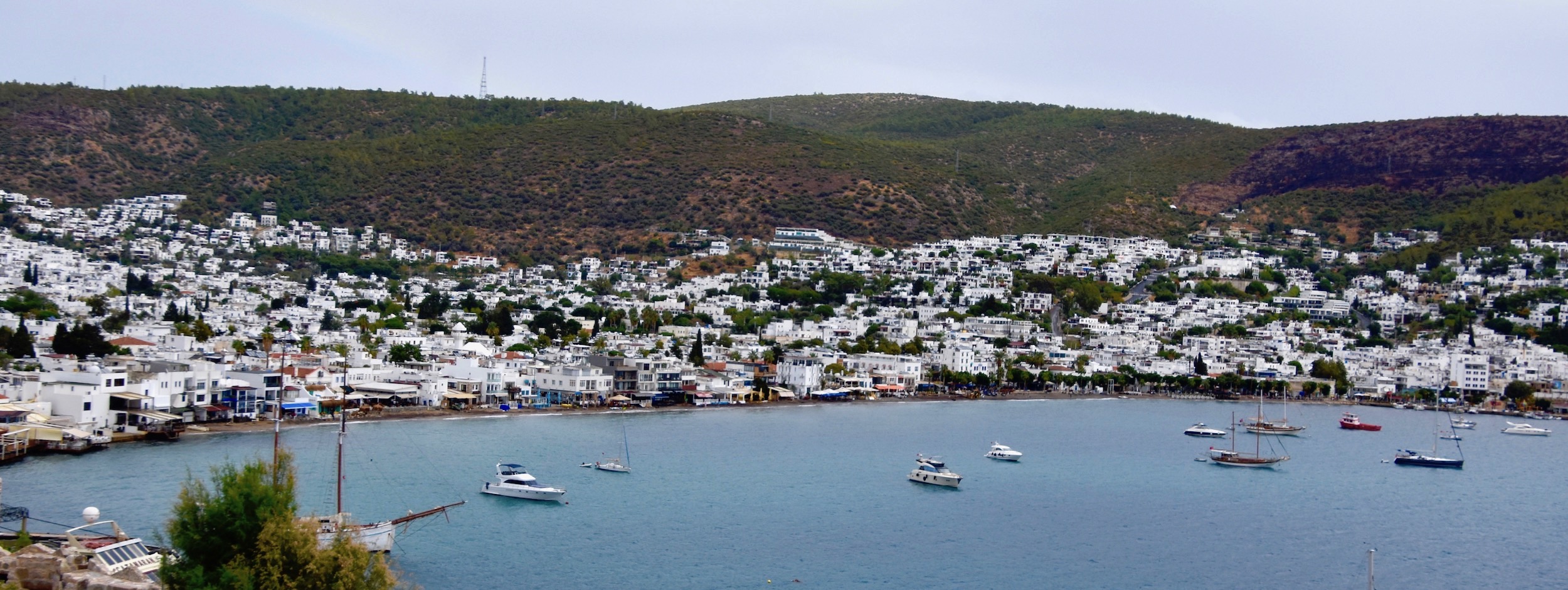
The Museum of Underwater Archaeology
We’ve had a brief look at the exterior of the inside of Bodrum Castle (I know that sounds like an oxymoron), now it’s time to go inside and view some of the thousands of artifacts that have been recovered by underwater archaeologists from some of the oldest shipwrecks in the world. All told there are items on display from nine different shipwrecks that occurred in the Aegean from the Mycenaean/Bronze Age through to the Ottoman Empire. Some of the wrecks have been reconstructed.
The first room we come to contains artifacts from the Amphora Wreck, a Byzantine ship carrying over 900 amphoras of wine that sunk around 626. Archaeologists are able to be that precise because of the coins that were found during excavation.
There is an entire room where the amphorae that were recovered from this wreck are on display.
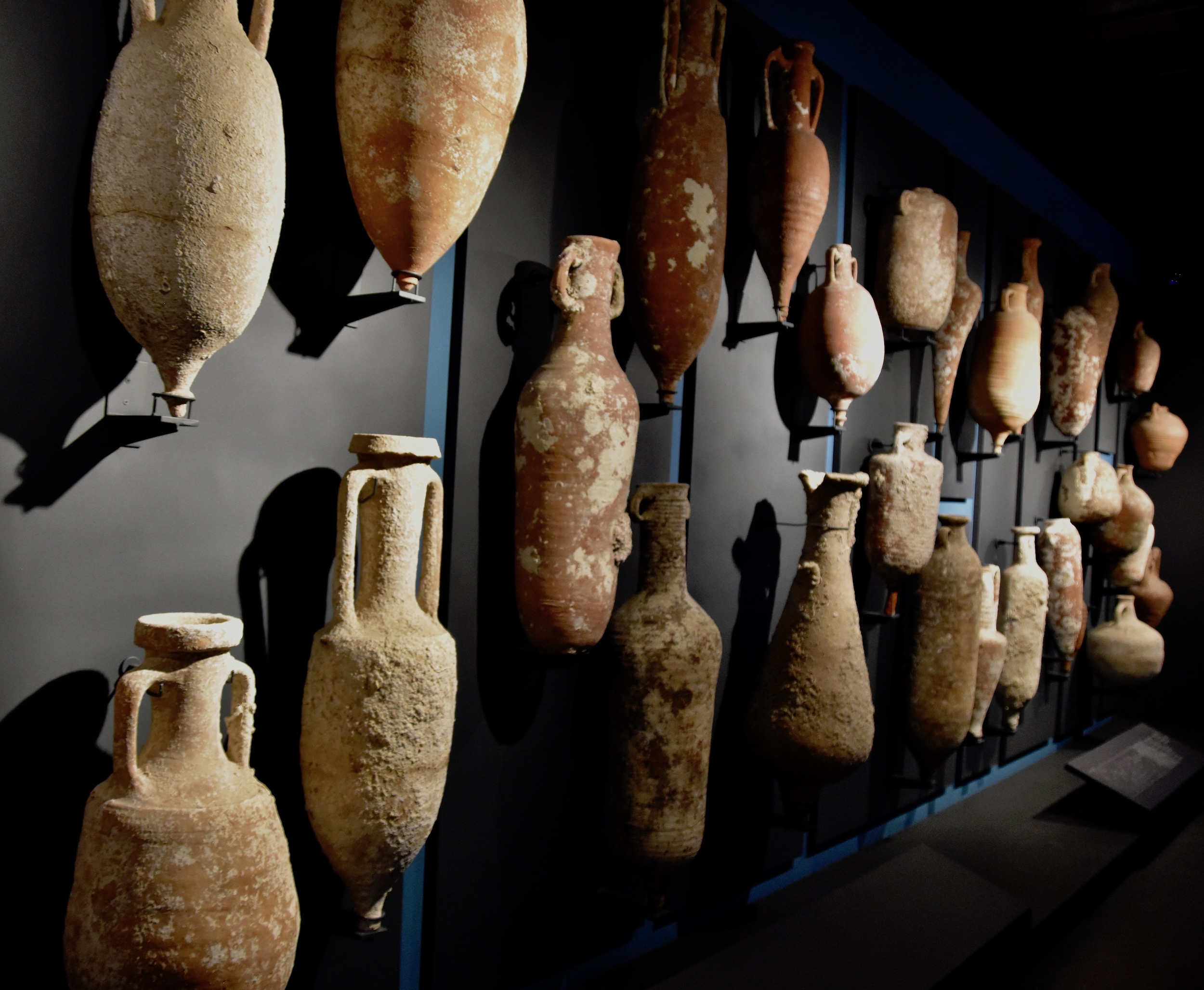
This is the ‘glass shipwreck’ which sank in 1026 carrying a cargo of glass objects from Lebanon to an unknown destination. It was also carrying a huge load of raw glass cullet which you can see underneath the hull. It was believed that these were destined for a Byzantine glass factory somewhere on the Black Sea coast.
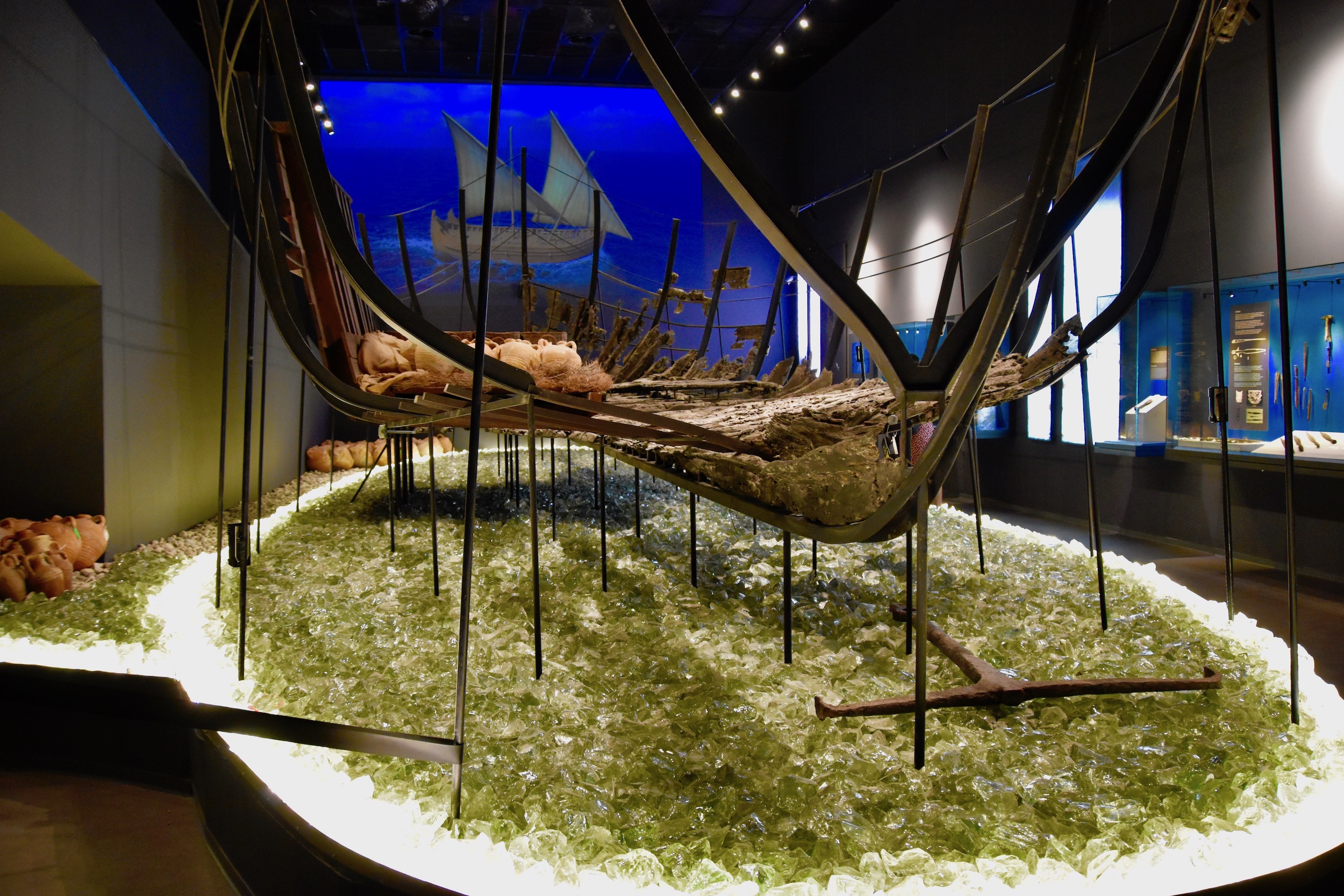
Other objects found with this wreck include this remarkable statute of an African youth.
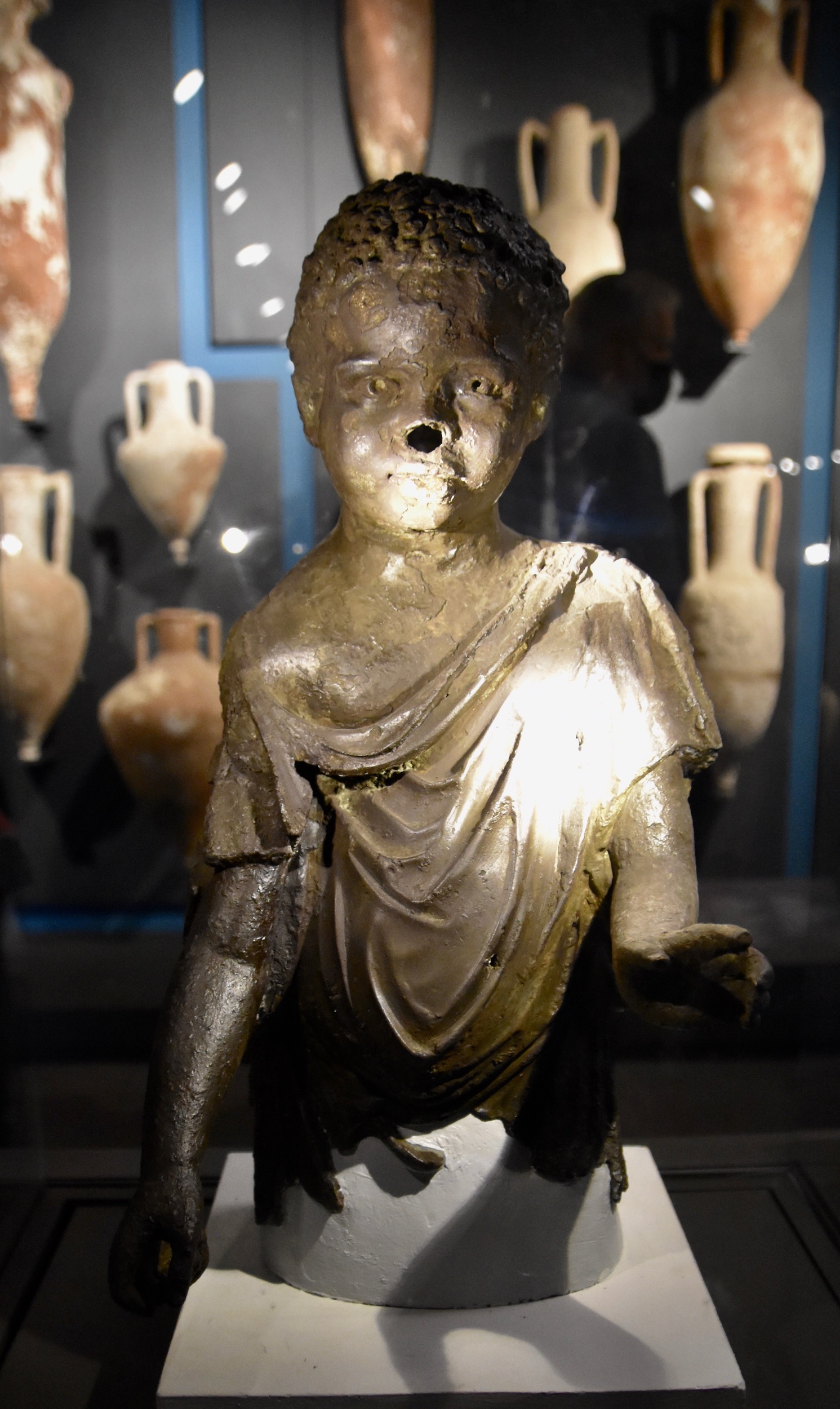
And this unusual sword hilt which almost certainly was made in southern India.
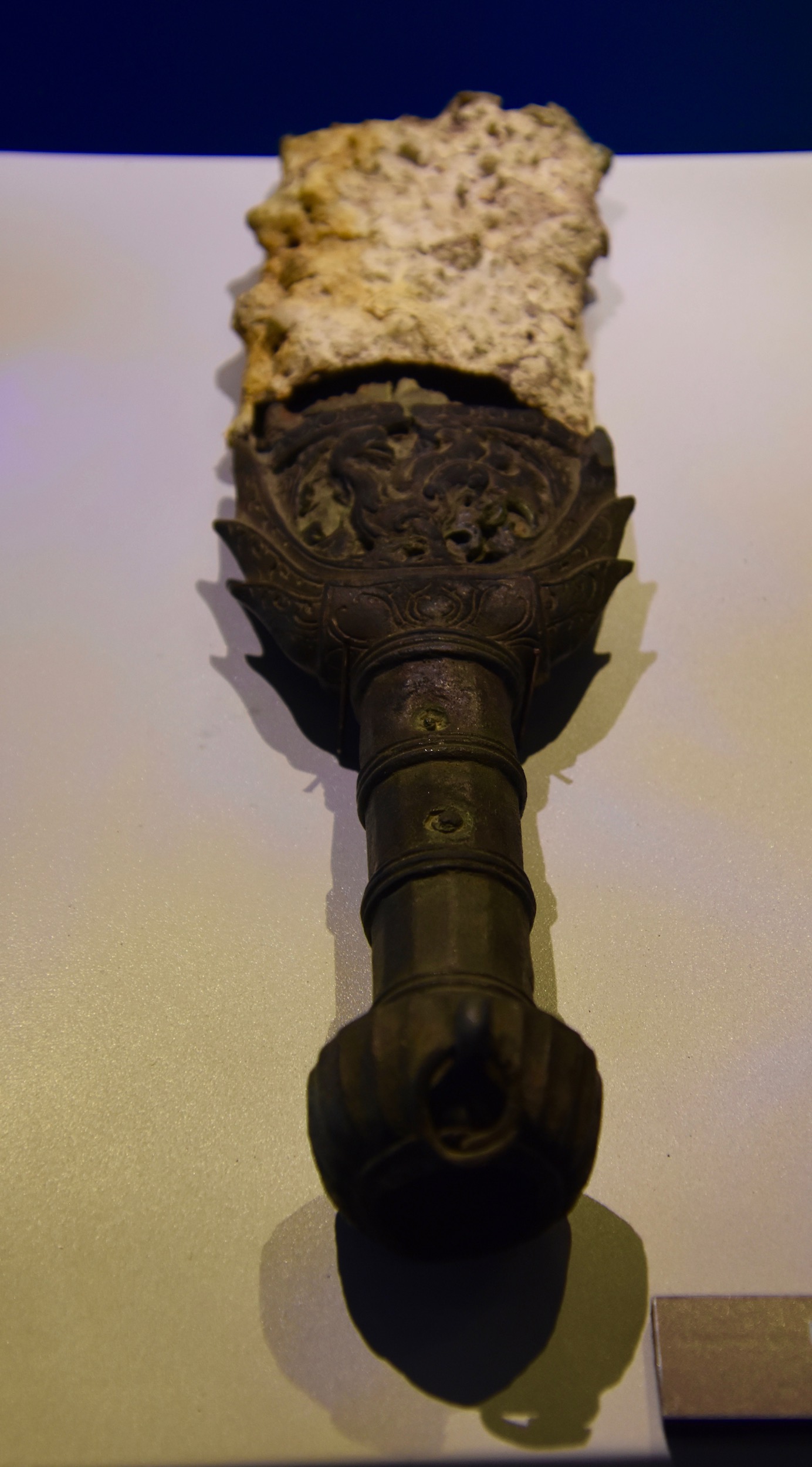
Another item from this wreck is this harpoon which looks quite deadly.
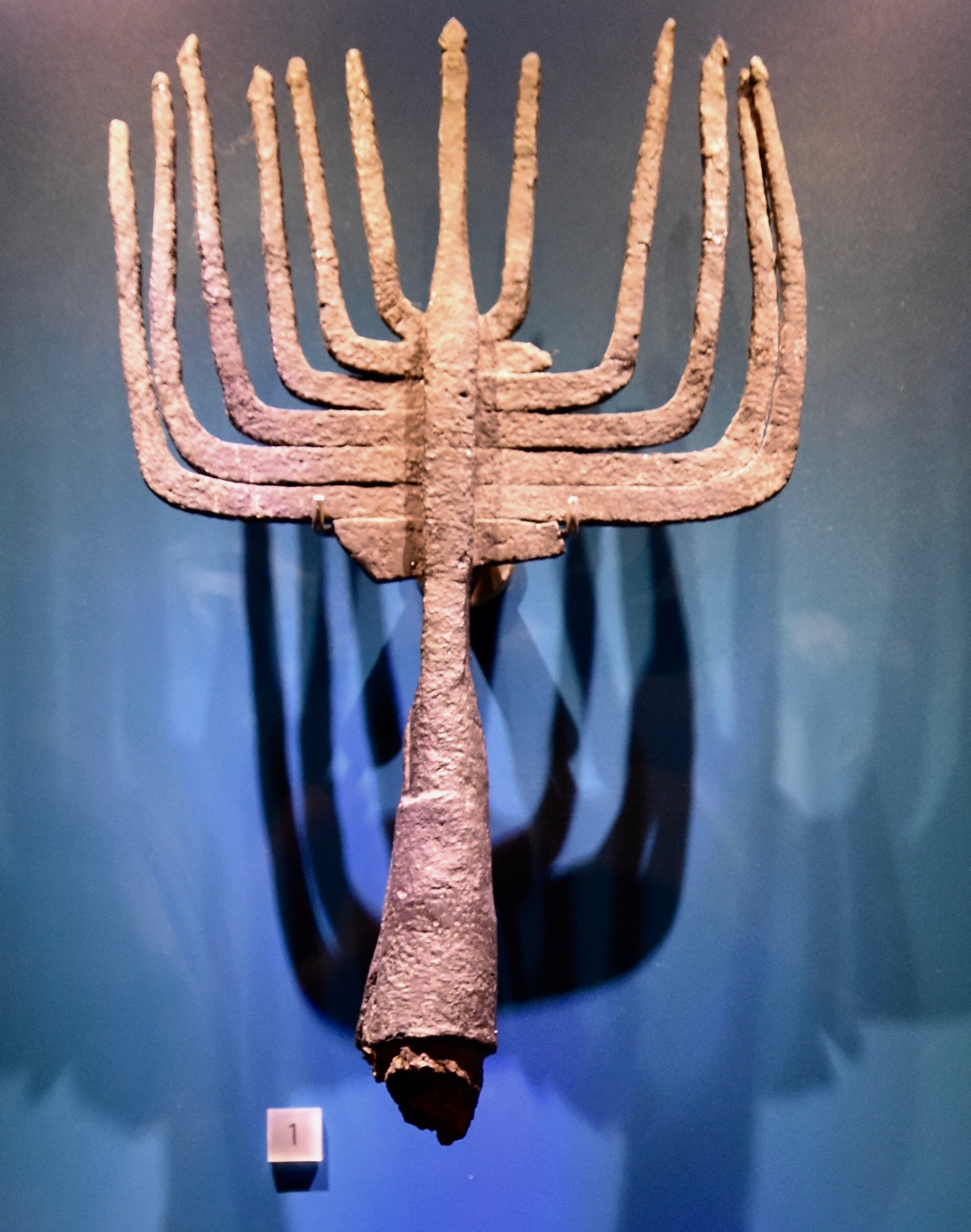
Another reconstructed shipwreck is over 2,200 years older than the Glass Shipwreck. This is the Uluburun Shipwreck which sank off Cape Uluburun on the Turkish coast during the late 14th century BCE. What is amazing about this ship which was initially discovered by a sponge diver, is the huge variety of artifacts from a great geographical area, from northern Europe to Africa and as far east as Mesopotamia. The link contains a detailed list of the cargo and other contents of this ship which has really opened archaeologist’s minds as to how extensive trade links were in the late Bronze Age.
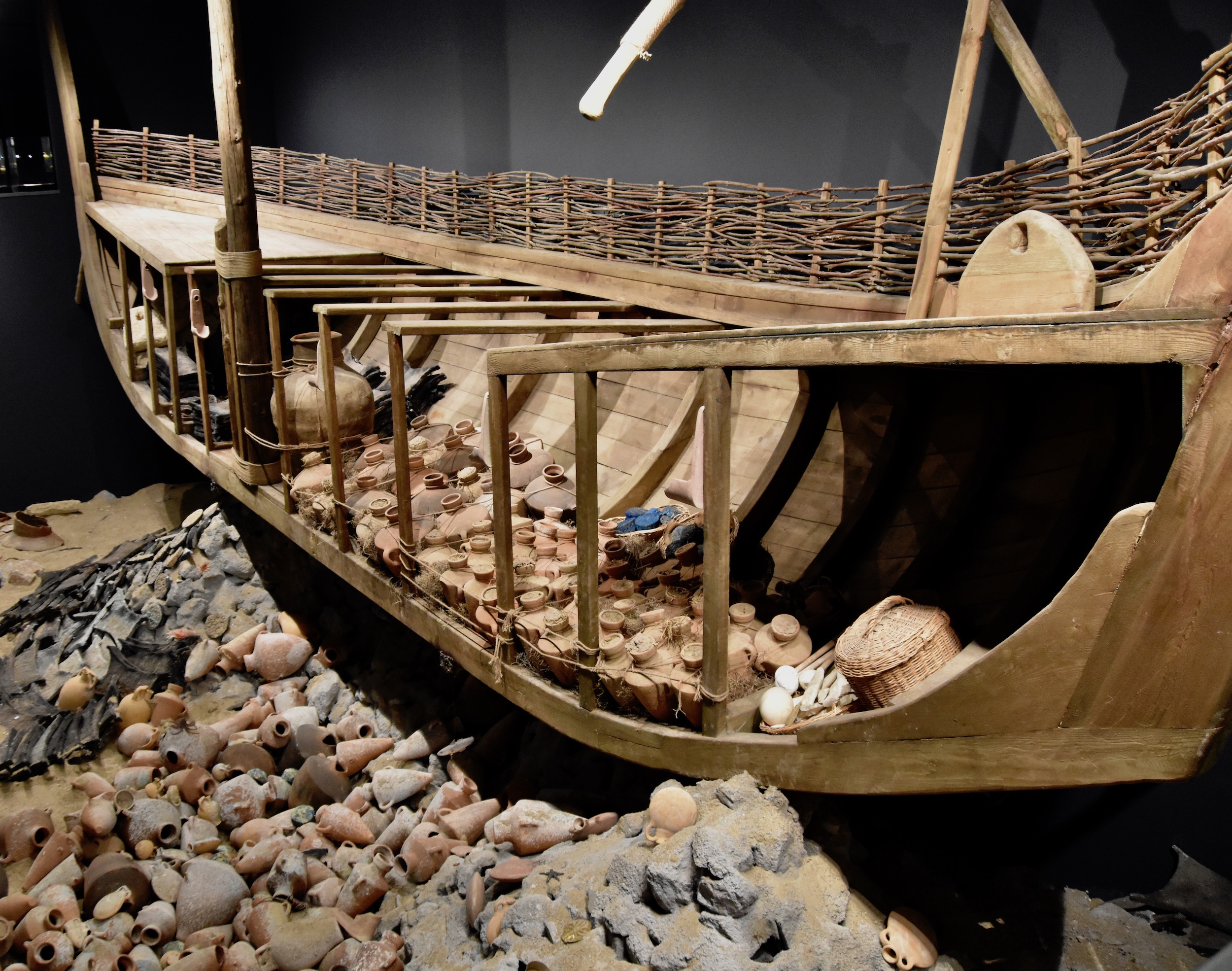
This is a display of just a few of the Uluburun artifacts.
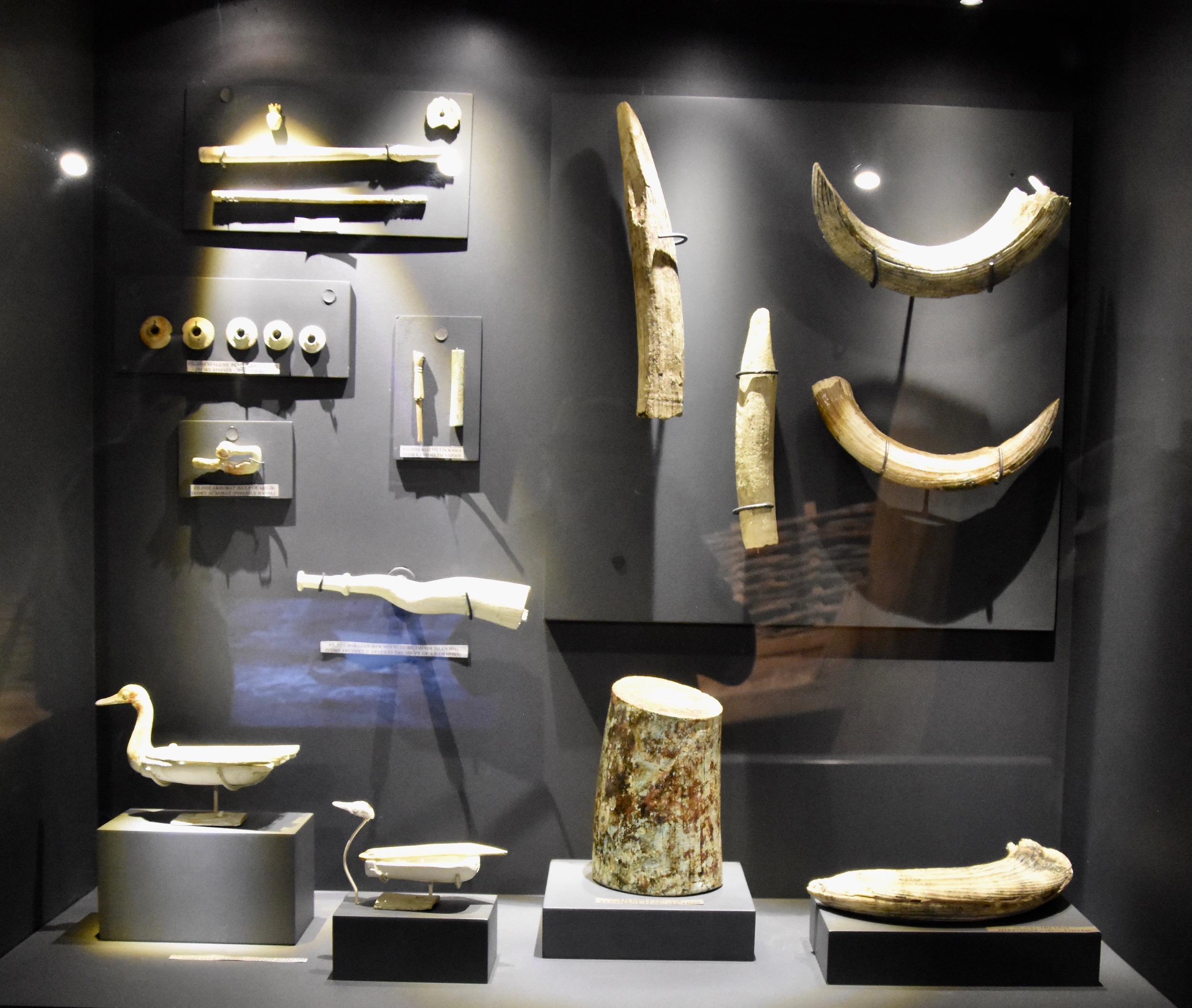
There are also artifacts from another late Bronze Age ship that sank at Cape Gelidonya in around the 12th century BCE.
The Underwater Museum in Bodrum Castle is not limited to items salvaged from the sea, but also has an extensive collection of artifacts from throughout ancient Caria, Lydia and Lycia. I found this set of eyes that were left at the Sanctuary of Athena as an offering, both creepy and fascinating at the same time.
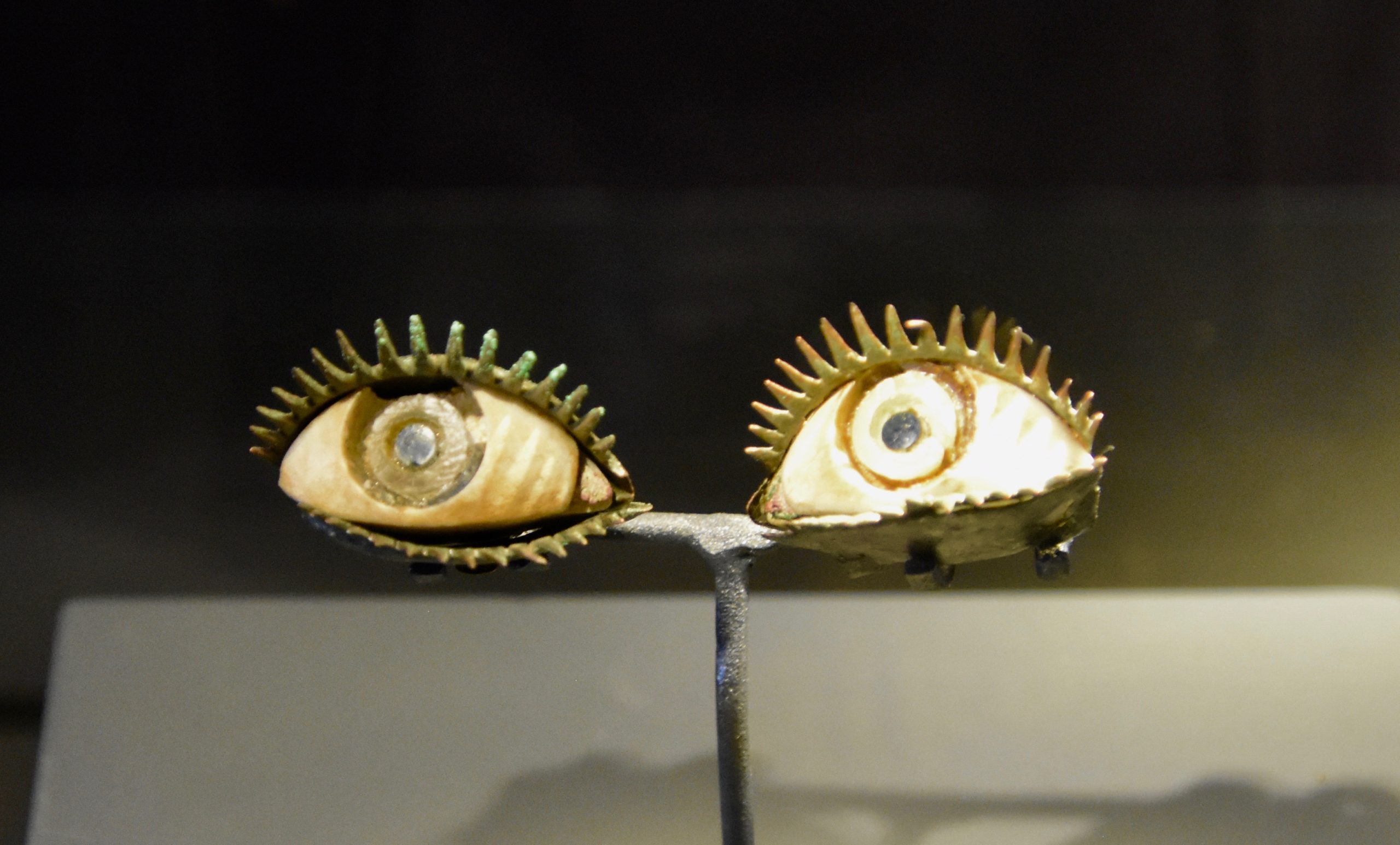
Although the Mycenaean Age is most closely associated with places on the Greek mainland like Mycenae, Tiryns and Pylos, there were Mycenaean settlements on modern day Turkey. The museum has a large collection of objects from the necropolis of Müsgebi which is just outside Bodrum. These date from the 15th century BCE and include tools and weapons.
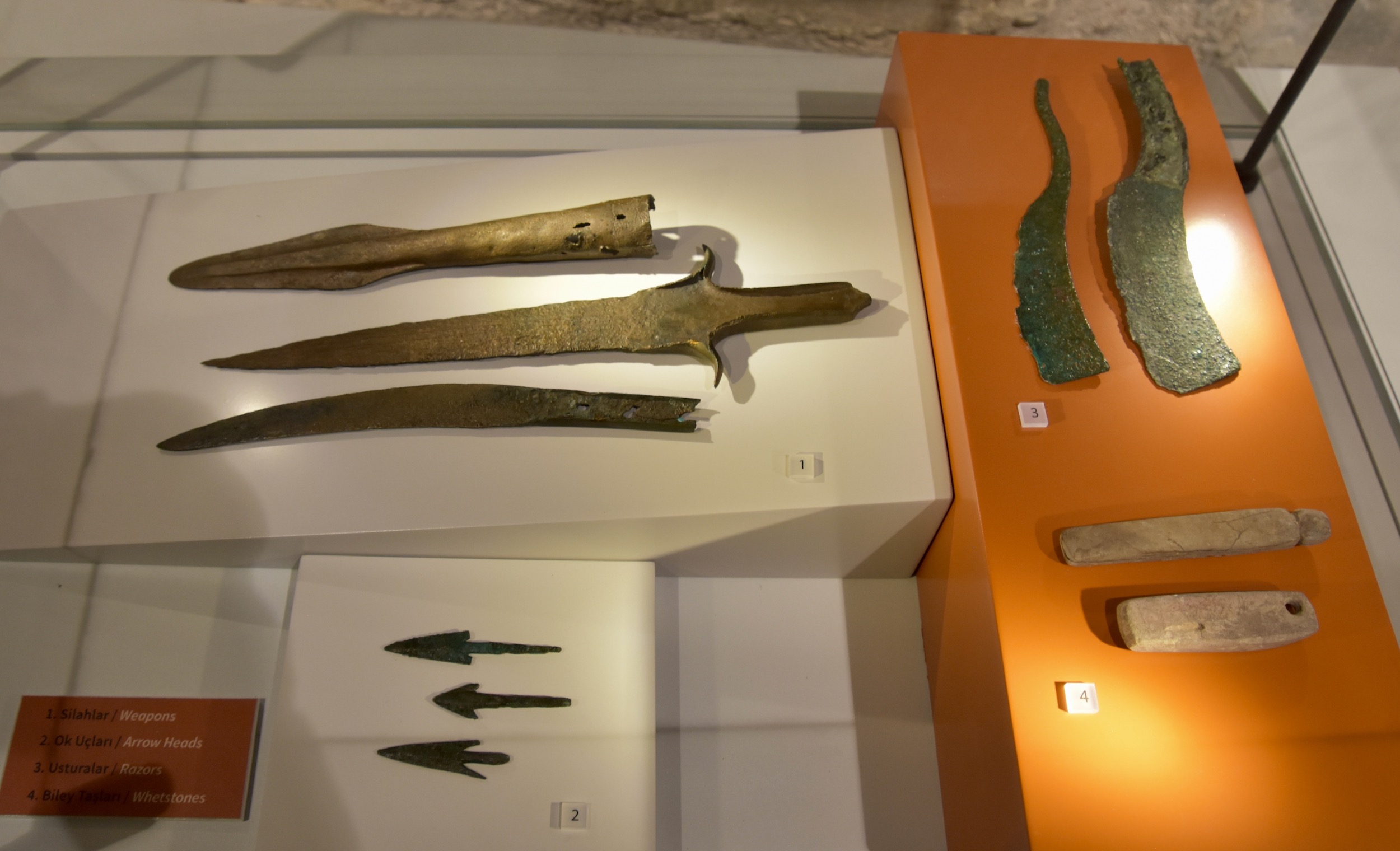
And a lot of very well preserved pottery
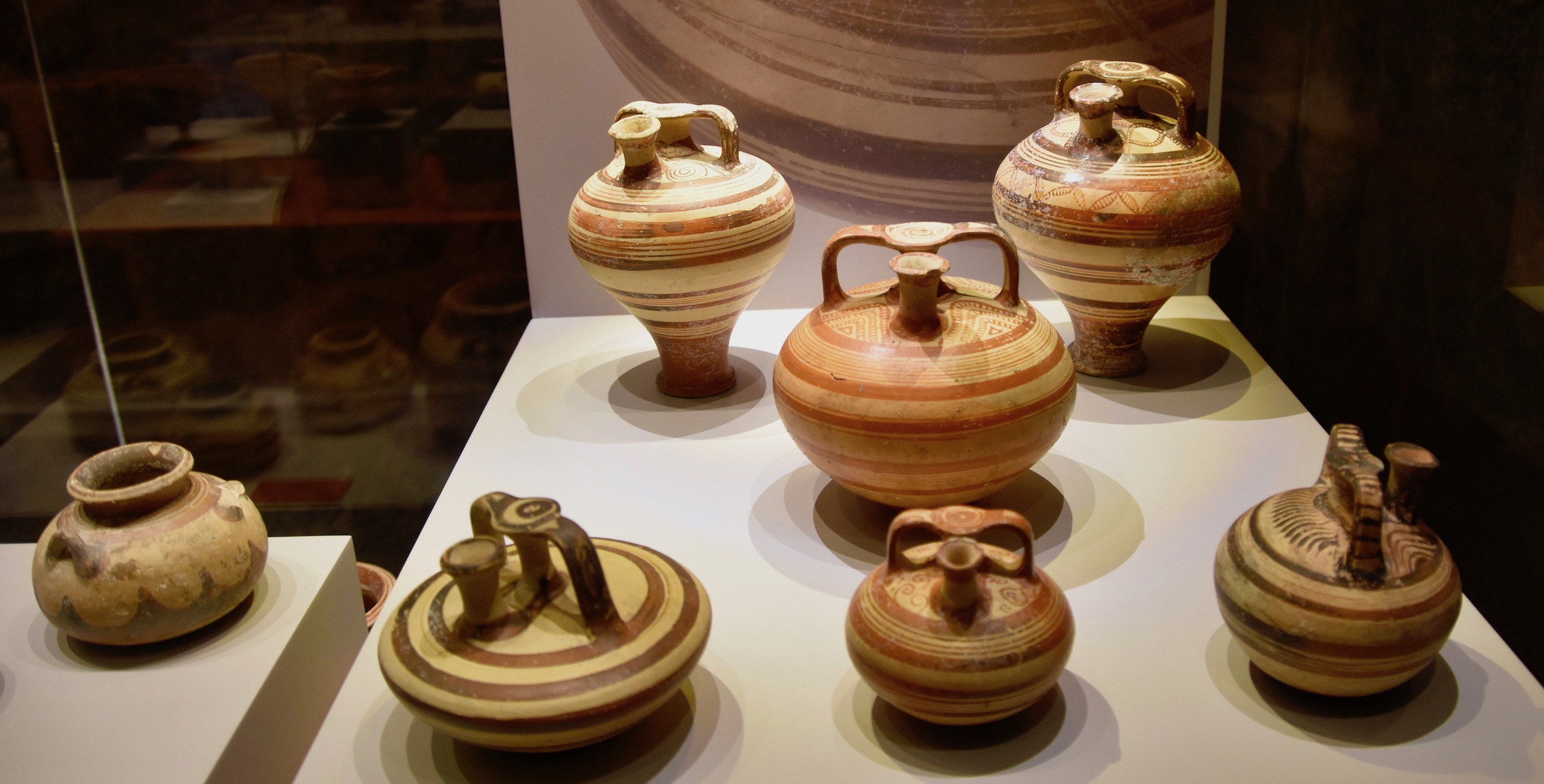
And jewelry.
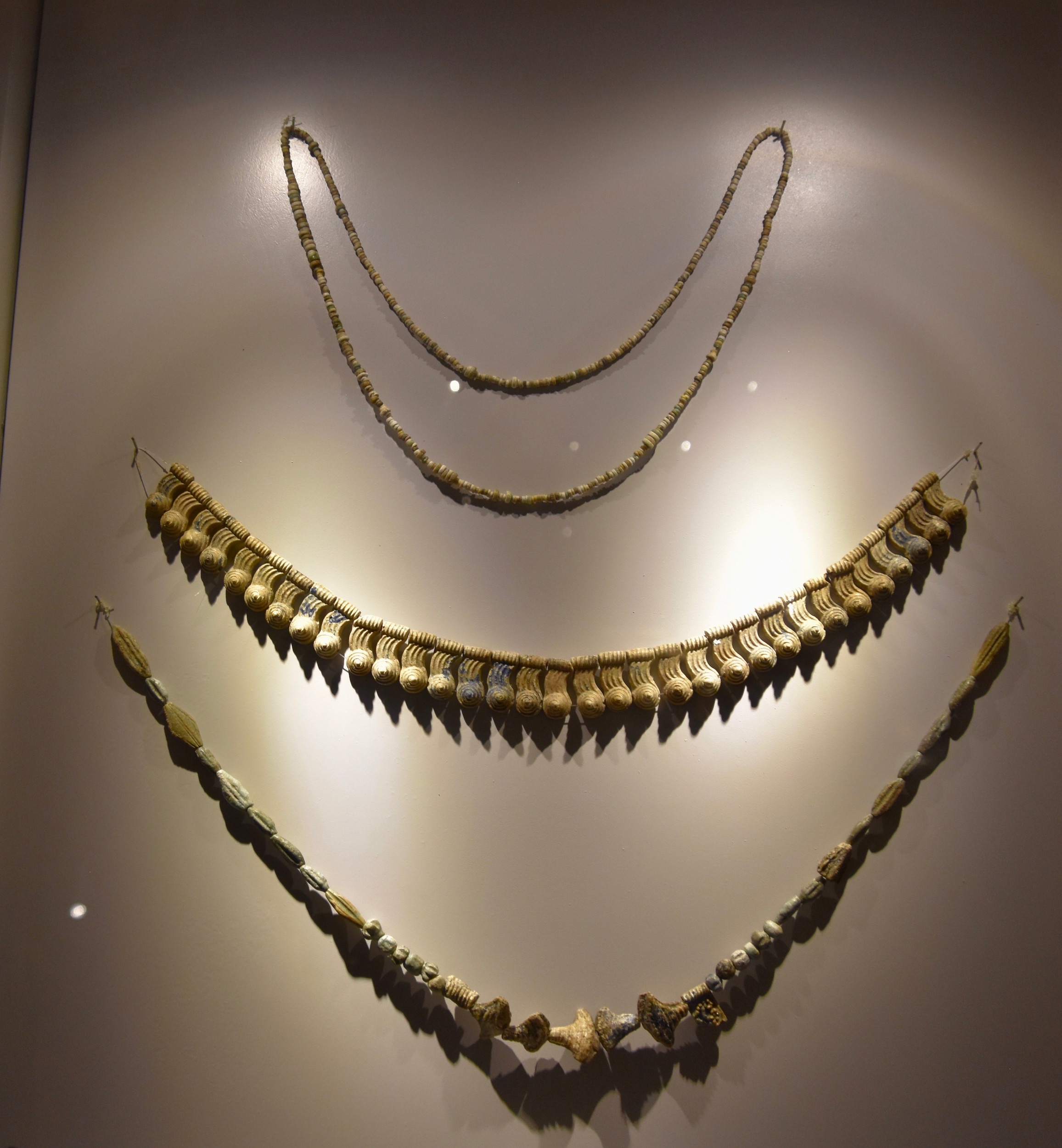
And for me one of the most interesting artifacts on display in Bodrum Castle, is this lamp in the shape of a hedgehog.

The final exhibit in the museum at Bodrum Castle is the Carian Princess room which contains the skeleton of an important Carian women that was only discovered by accident in 1989. The speculation was that it could be the remains of Ada of Caria who was a sister of Mausolus and Artemesia and ruled Halicarnassus with her brother/husband Idrieus after the death of the two other siblings. When Idrieus died she ruled on her own until usurped by the last of the siblings Pixodarus. She fled the city and eventually fell in with Alexander the Great who was rampaging in the area at the time. She actually adopted him which he apparently OKed and then reinstated her on the throne of Halicarnassus where she was very popular. The possibility of this being her remains was strengthened by forensic reconstruction of the skeleton.
This is what the Carian woman in the rediscovered tomb is thought to look like. It can’t be definitively proven to be Ada, but neither can it be disproven.
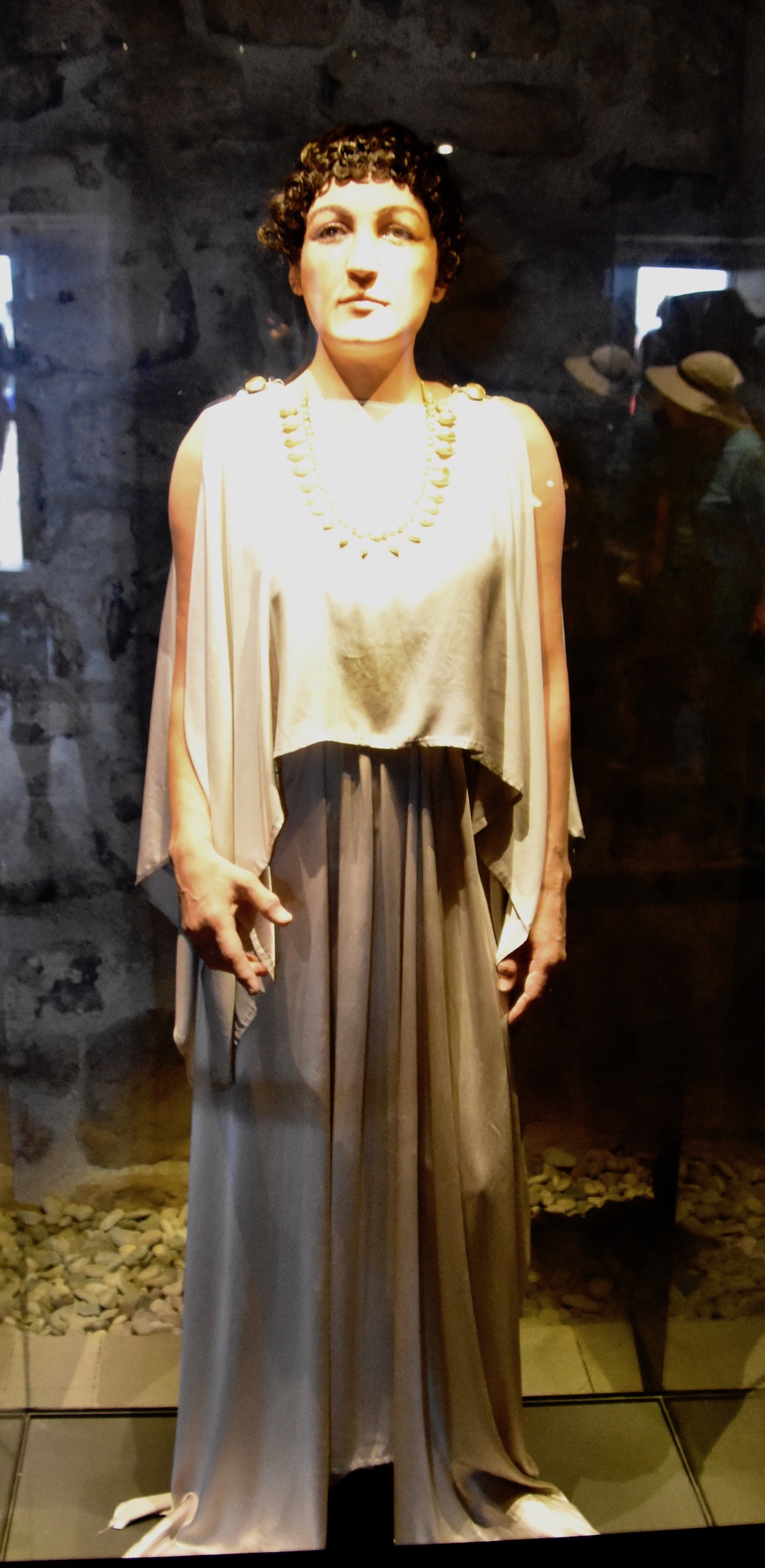
That concludes our visit to Bodrum Castle and our stay in Bodrum. In the next post we’ll head for the Turquoise Coast and the town of Kas, but not before stopping in Fethiye to see the Lycian tombs there. I hope you’ll join us.

